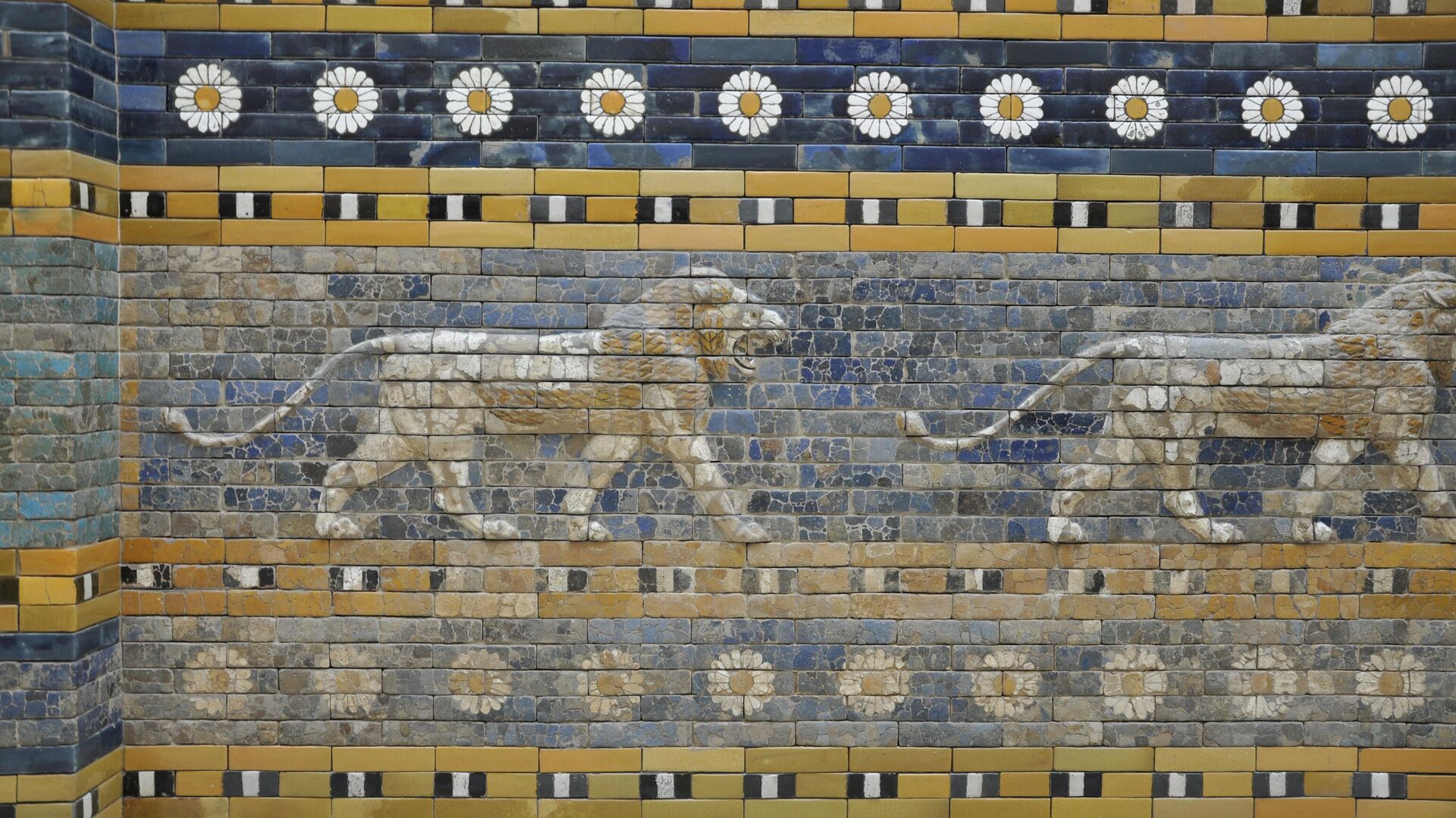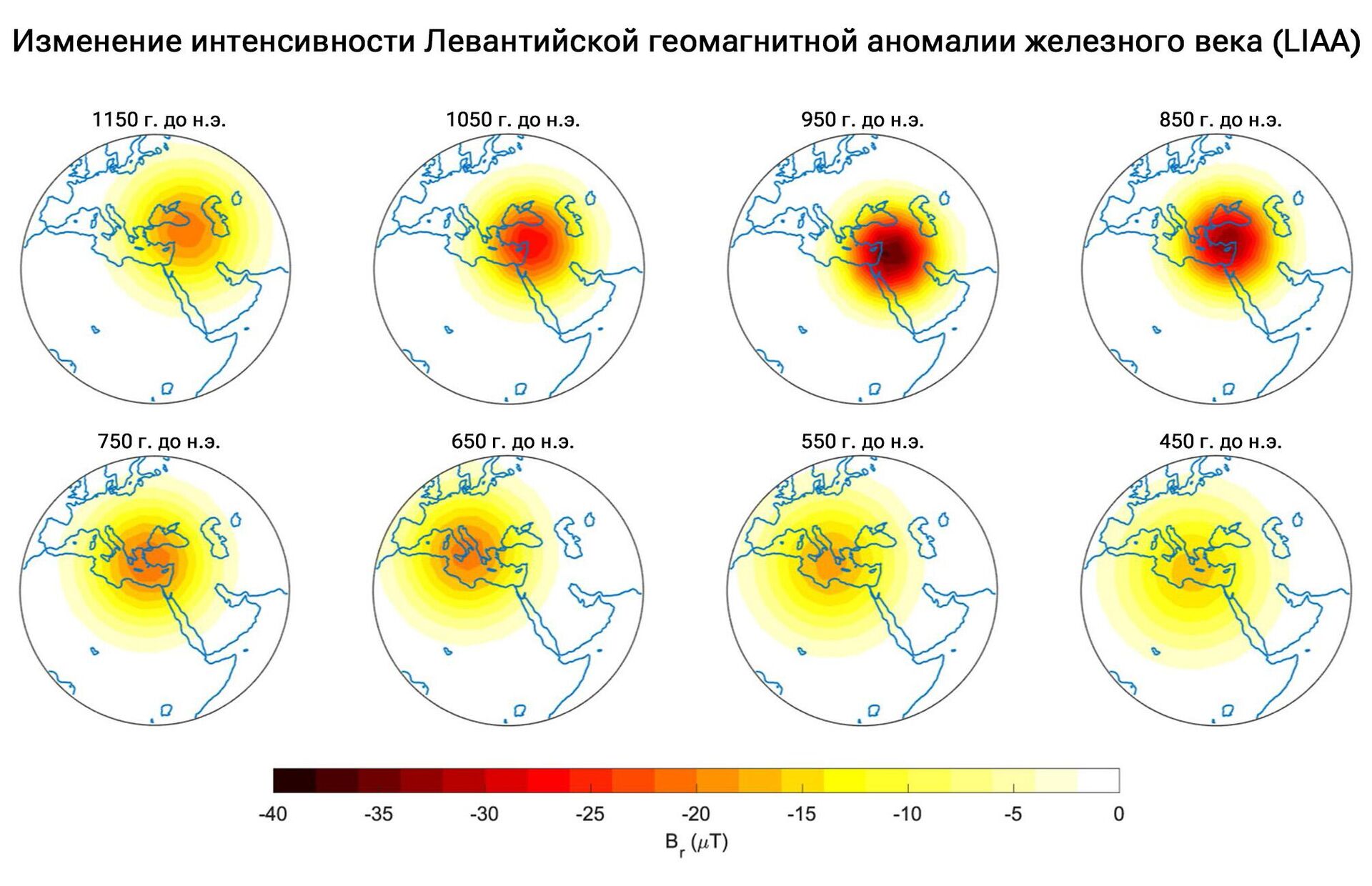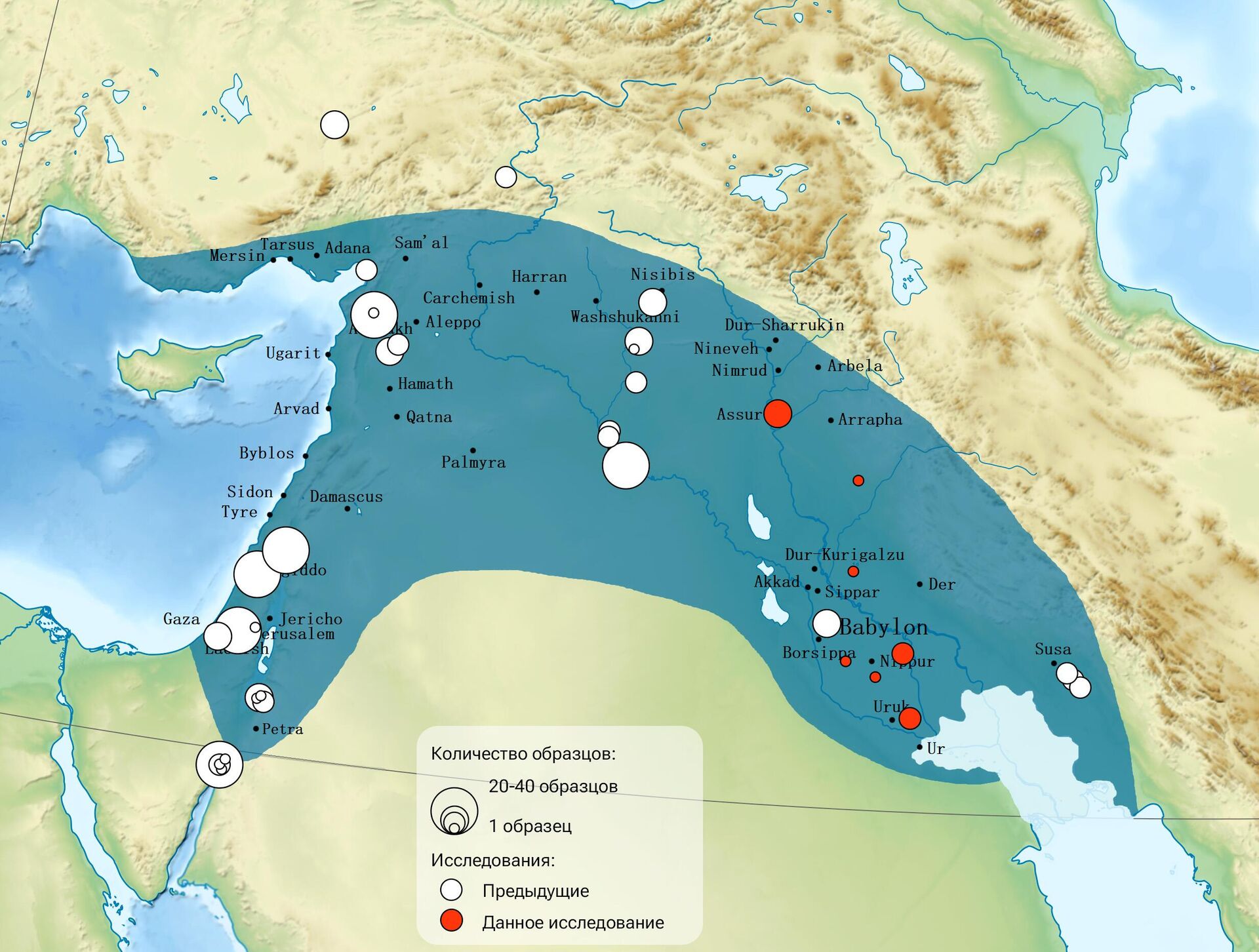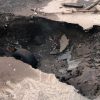 < br />
< br />
MOSCOW, December 29, Vladislav Strekopytov. A new method for determining the age of ceramic products by residual magnetization has helped restore the chronology of events that occurred over three millennia in Ancient Mesopotamia, a key region from the point of view of human development. The objects of the study were bricks with the names of Babylonian kings.
Magnetic archeology
According to scientists, life on Earth would be impossible without a magnetic field — it, like a giant shell, protects planet from solar radiation and destructive cosmic rays.
The geomagnetic field is heterogeneous: it contains positive and negative anomalies, due to the peculiarities of the deep structure and different magnetization of the earth's crust. Their current location is well known thanks to constant geophysical observations. Now the Earth's magnetic field is weakest in the zone of the South Atlantic negative anomaly, stretching from South Africa to Brazil, and strongest at the poles.
But this does not mean that it has always been like this. Over time, the nature of the geomagnetic field changes: some anomalies weaken, others strengthen. This is due to the uneven rotation of the inner and outer parts of the metal core of the planet, due to which the geodynamo effect occurs — the kinetic energy of the liquid mixed during the convection process is converted into electromagnetic fields.
Changes in the Earth's magnetic field are recorded in magnetism-sensitive minerals. During crystallization of the magmatic melt, they, like compass needles, occupy a strictly oriented position. In addition, some of them — for example, iron oxides — retain thermoremanent magnetization (TRM). By measuring it, geophysicists determine how the direction and strength of the magnetic field has changed over millions of years of geological history.
But when it comes to time scales of thousands and hundreds of years, this method does not work. It is impossible to determine the age of igneous minerals with such accuracy. And here archaeologists help geologists and geophysicists. The fact is that ceramic products that are discovered during excavations also contain iron oxides. During firing, they are heated to a very high temperature and then slowly cooled in a local magnetic field, “memorizing” its TRM. Magnetic archeology techniques allow the reconstruction of variations in the geomagnetic field that occur over shorter time intervals. But the main problem still remains the age of the samples — it is not always possible to accurately determine it in the absence of organic matter.
Levantine anomaly
By the mid-2010s, enough archaeomagnetic data had accumulated to draw the first conclusions. Scientists have found that in the 2nd-1st millennia BC (this period roughly corresponds to the end of the Bronze Age — the beginning of the Iron Age), magnetic anomalies existed in China, the Western Black Sea region, and the Azores. But the so-called Levantine Iron Age anomaly (LIAA — Levantine Iron Age anomaly), located in the Eastern Mediterranean (Levant) and Mesopotamia, was particularly intense.Spanish scientists from the Complutense University of Madrid have summarized magnetic archeology data from Eastern Europe and Western Asia for the period from 1150 to 450 BC and processed it using computer modeling. The results showed that LIAA intensity peaked in 950 BC, and by 650 the anomaly had weakened but become more widespread, spreading throughout Europe. < br />
< br />
Bricks reveal ancient secrets
The method of magnetic archeology has been extremely successfully developed in a recent study by scientists from the USA, Israel and Great Britain. As objects, the authors used baked bricks of Ancient Mesopotamia, dating back to the 3rd-1st millennia BC. Their uniqueness lies in the fact that from the inscriptions on the surface one can accurately determine during the reign of which Babylonian king they were made.
Having analyzed the inclusions of iron oxide from 32 bricks stored in the Sulaymaniyah Museum in Iraq using a magnetometric method, researchers compiled an archaeomagnetic scale covering the reign of 12 kings, including Nebuchadnezzar II. He was the eldest son of Nabopolassar, the founder of the Neo-Babylonian Empire. Under him, the empire reached special power in the 6th century BC.
The results showed that between 1050 and 550 BC, the magnetic field between the Tigris and Euphrates rivers (in modern Iraq) was particularly strong. Scientists also discovered that from 604 to 562 BC its parameters changed dramatically in a relatively short period of time.
In total, the researchers identified three peaks of amplification — in the 950s, 750s and 500s BC. This confirms the geophysicists' hypothesis about rapid local bursts of magnetic intensity. But most importantly, scientists have proven the possibility of using archaeomagnetic data to date ancient ceramics.
“By assessing paleomagnetic conditions, we can now determine the age of any artifacts that experienced strong heating in antiquity,” the lead author of the study is quoted in a press release. Professor Matthew Howland from Wichita University in Kansas.
New research tool
Previously, the main chronological method in archeology was radiocarbon dating, which requires the presence of organic remains. New technology makes it possible to date items with high resolution, the age of which could not be determined before. Radiocarbon dating gives the age of artifacts with an accuracy of hundreds of years, and the resolution of the scale based on the reign dates of the Mesopotamian kings is measured in decades.
“Our work will help create an absolute dating base based on archaeomagnetics that others can use,” says one of the study’s authors, Mark Altavil, a professor at the Institute of Archeology at University College London.
Historians are primarily interested in it: archaeomagnetic dating will provide the opportunity to more accurately determine the time of ancient rulers in power. Although the duration and order of their reigns are well known, there is disagreement regarding the exact dates.
The pre-Babylonian period, from a chronological point of view, generally remains a blank spot in the history of the Ancient World. Almost no written sources dating back to this time have survived. And here there is special hope for archaeomagnetic research. Perhaps they will help unravel the complex tangle of events associated with the so-called Bronze Age catastrophe, which occurred around the 12th century BC. Then major conflicts in Greece, Asia Minor and the Levant ended with the fall of the Hittite Empire and the arrival of the “peoples of the sea.”
Geologists will also benefit from the discovery. Geomagnetic field variations are one of the most mysterious topics in the geosciences. Well-dated archaeological finds will provide an unprecedented opportunity to track paleomagnetic changes occurring on scales of several decades — and even shorter.























































Свежие комментарии